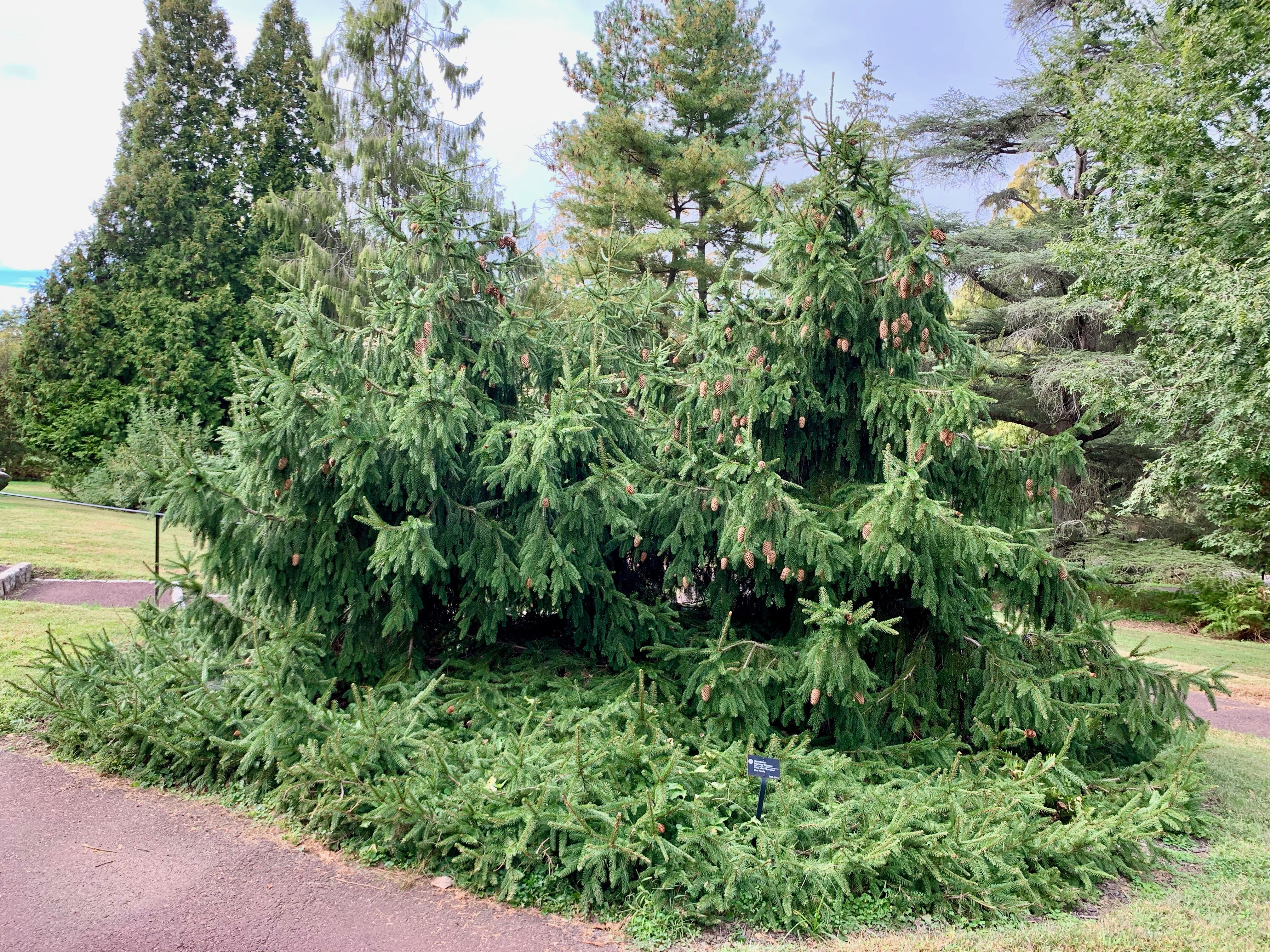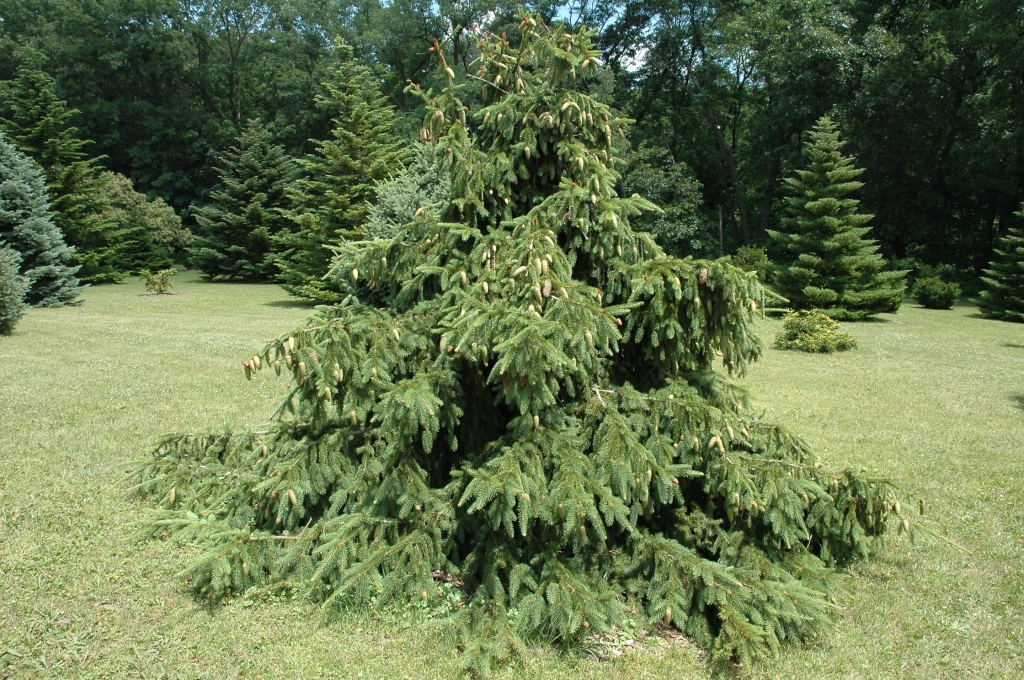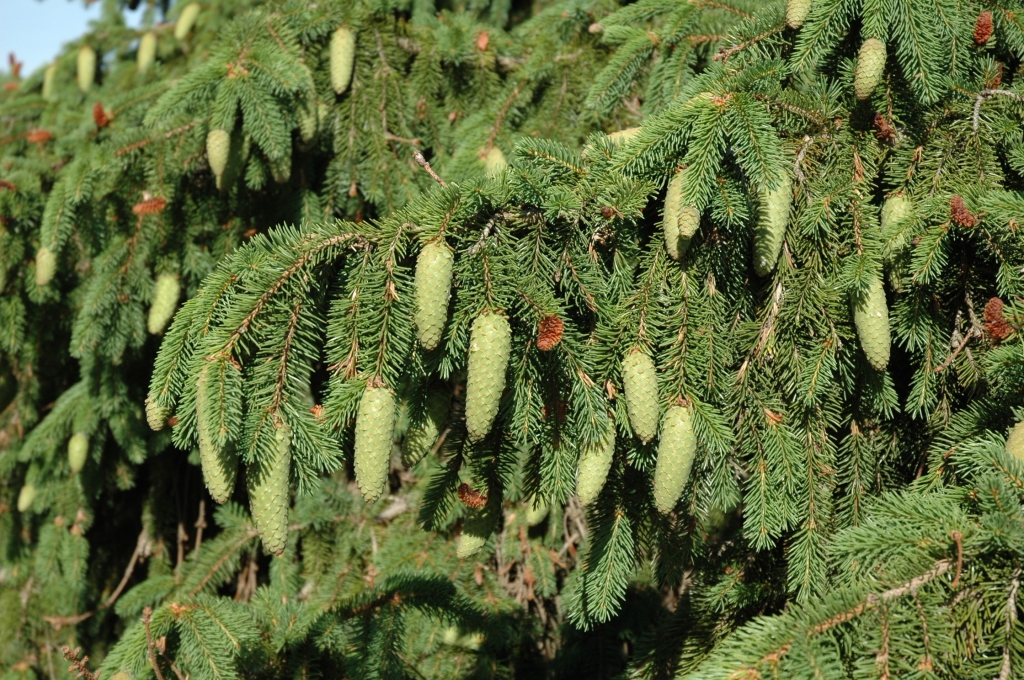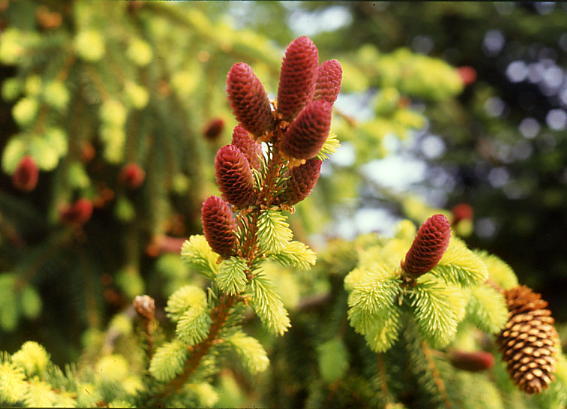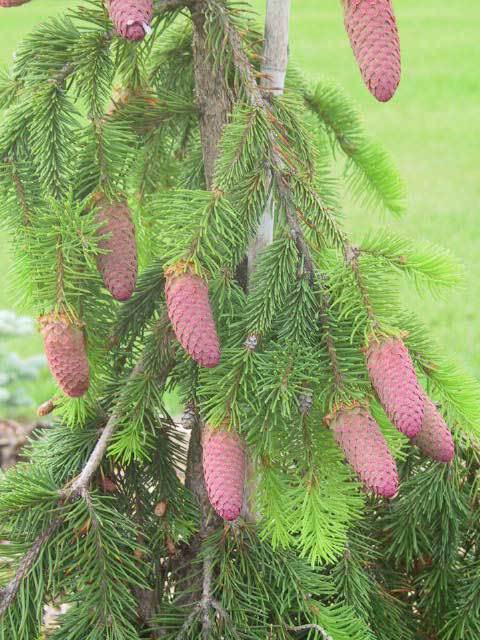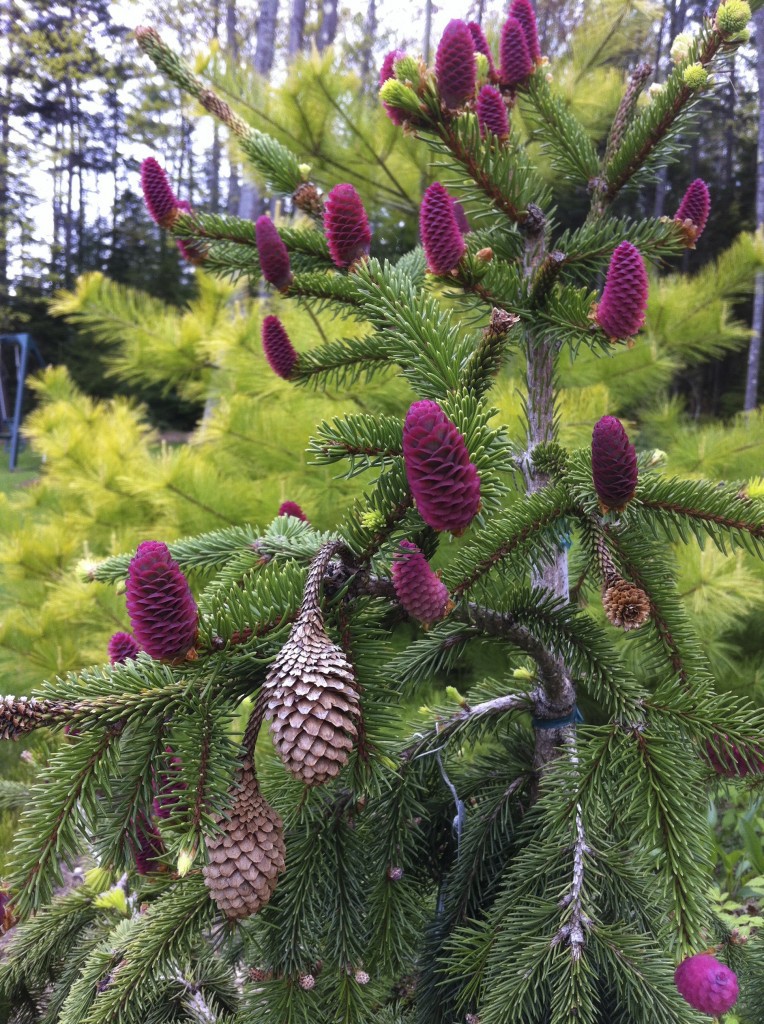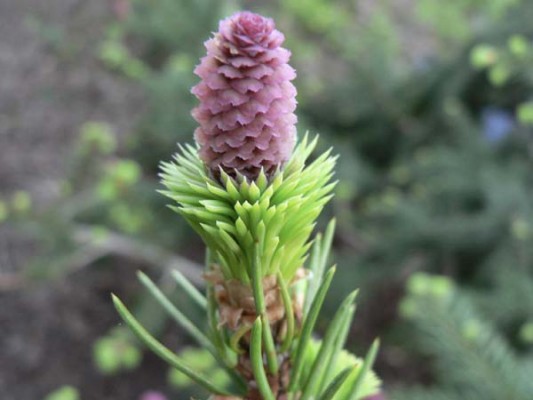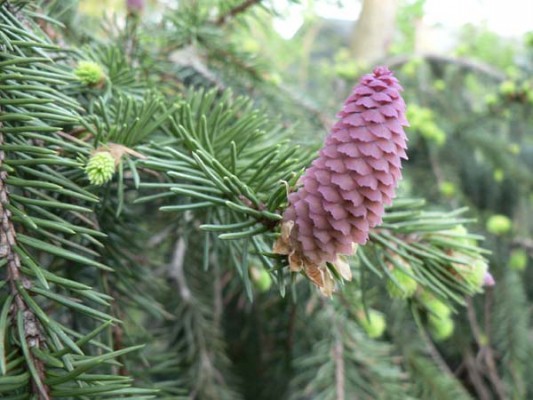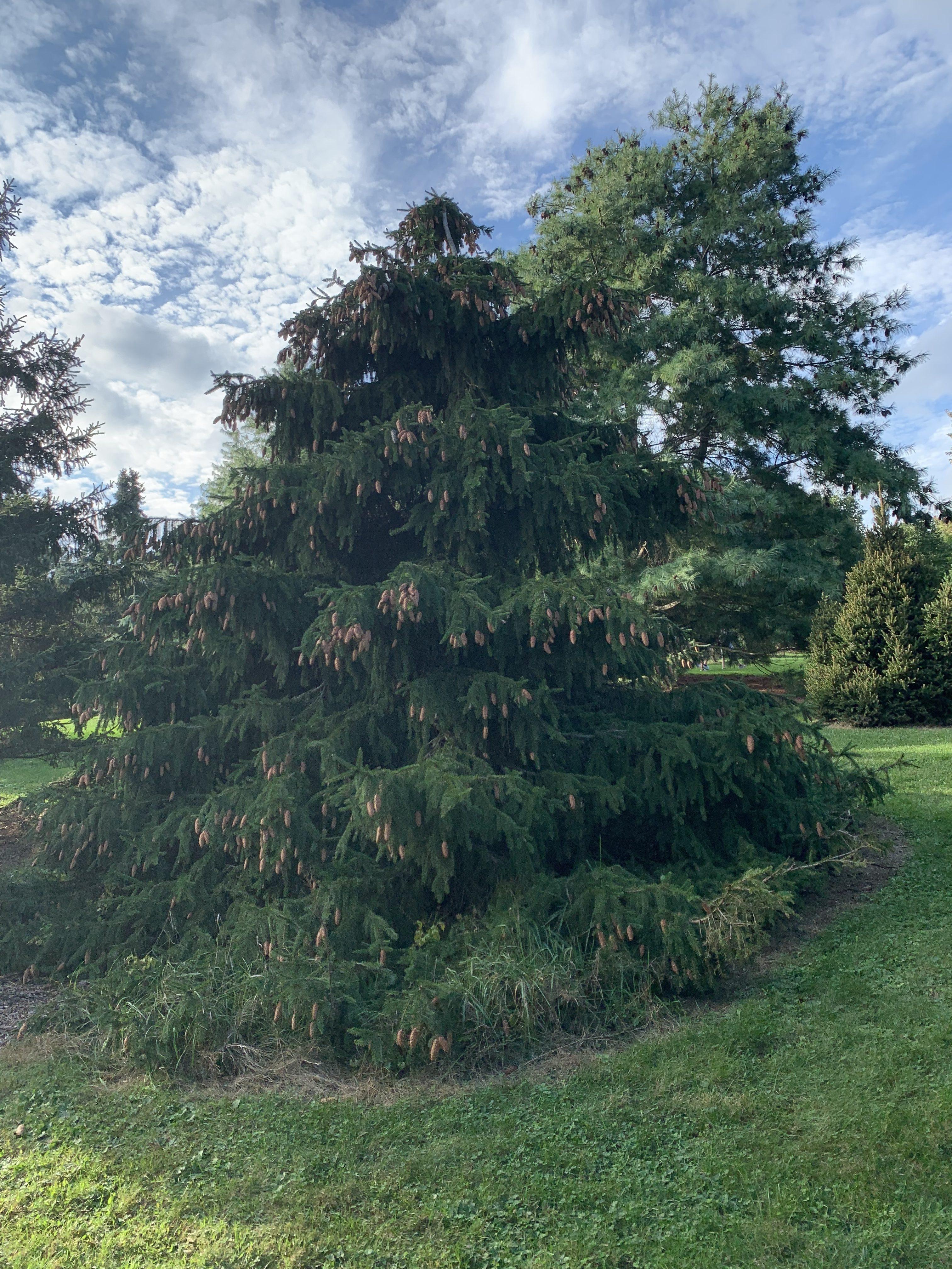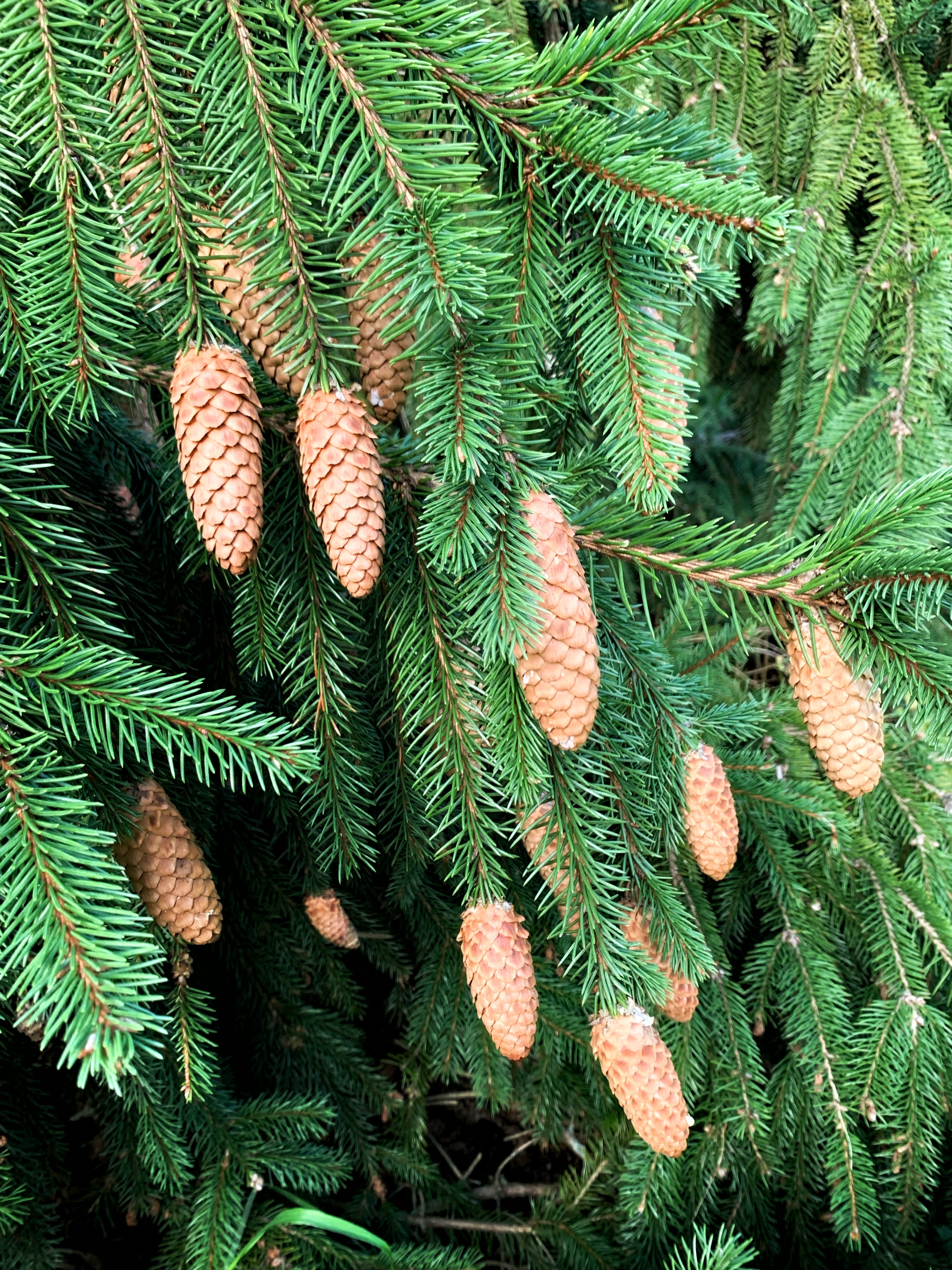Picea abies 'Acrocona' is an irregular upright form of Norway spruce, named for its unusual habit of producing most of its cones at the end of the new growth ("acro" meaning "at the end"). This characteristic also means that tree is self pruning in that the twigs terminate with the cone and the tree tends to take on a drooping, spreading shape and may need staking a terminal to achieve a desired height. After 10 years of growth, a mature specimen will measure 12 to 15 feet (4 - 5 m) tall and wide, an annual growth rate of 15 to 18 inches (35 - 45 cm).
In spring, its abundant red-purple cones and lime green foliage coloring make it a standout in the garden. By summer, as the shoots lengthen, the cones droop downward and turn brown in color and foliage coloration reverts to more typical gray-green.
This cultivar is known to gardens and the nursery trade since about 1890, when it was found occurring as a spontaneous mutation in a forest near Uppsala, Sweden.
